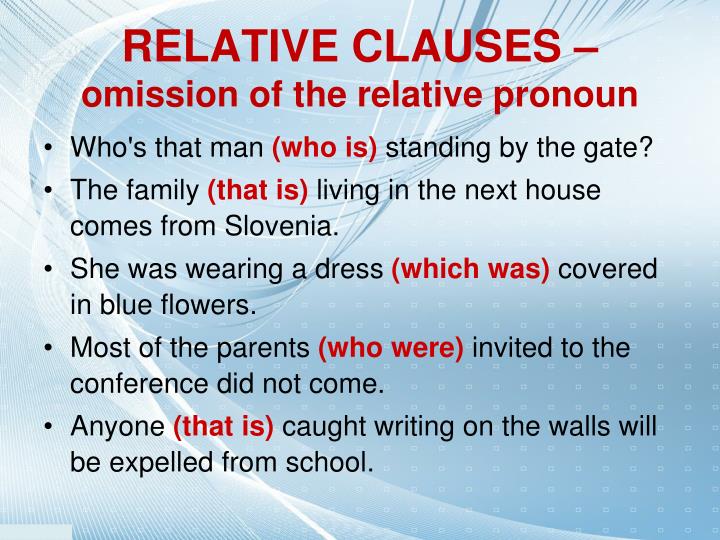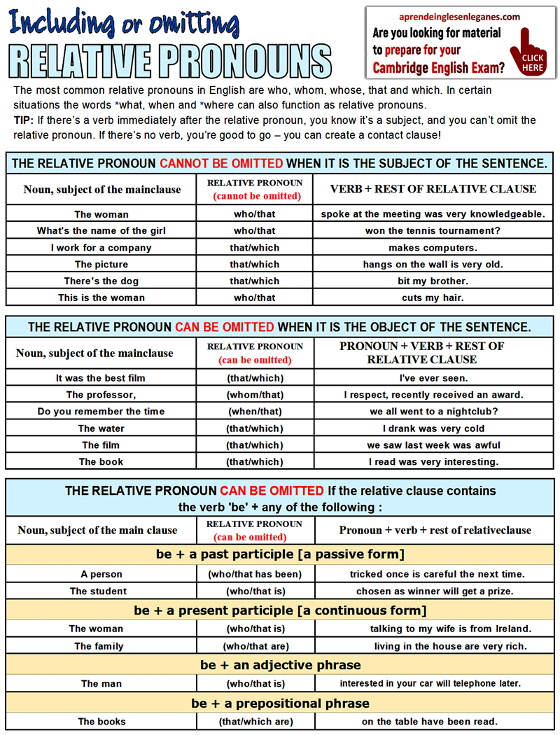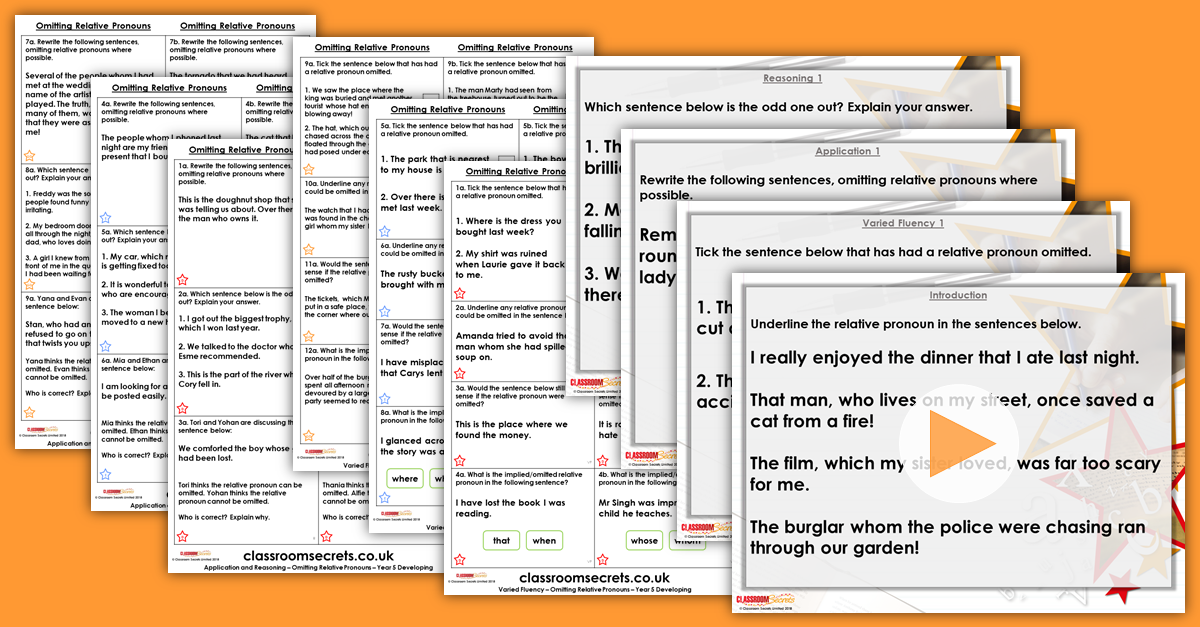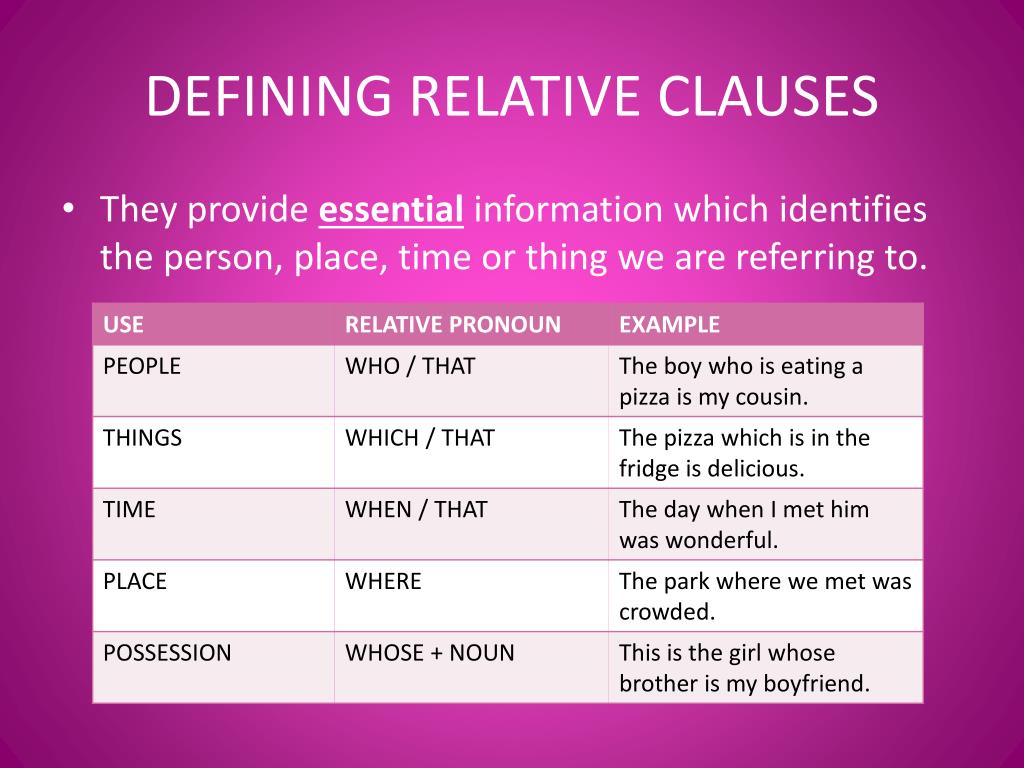
Relative Clauses Omitting The Relative Pronoun Exercises Pdf ((TOP))
1 Here is a sentence with a relative clause: 1) I gave her some money which/that she spent immediately. Technically, we can omit the relative pronoun because it is the object of the relative clause ( some money is the object of the verb spend ), giving us: 2) I gave her some money she spent immediately.

Omitting Relative Pronouns TED IELTS
Can the relative pronoun be omitted? Ask Question Asked 5 months ago Modified 4 months ago Viewed 232 times 0 The dress which / that the movie star is wearing weighs about fifty pounds. Can the relative pronoun be omitted or not ? If it is possible to be omitted, please tell me why. grammar reduced-relative-clauses Share Improve this question
Relative Clauses And Prepositions Relative Pronoun Definition, List and Examples of
Index Decide whether or not the relative pronoun can be omitted in the following sentences. ANSWERS 1) This was the hotel that we stayed in for two weeks. Can't be omitted Can be omitted 2) She showed me the emeralds which she had brought back from South Africa. Can't be omitted Can be omitted 3) The smartphone that costs £200 is very good.

Relative Clauses And Prepositions Relative Pronoun Definition, List and Examples of
Summary We can omit relative pronouns when they are not the subject of the clause (without affecting the structure or meaning of the sentence). When we omit the relative pronoun we can use that in informal speech. For example:

TOMi.digital Relative clauses
Why is because you can: you are free to omit who or that heading a restrictive relative clause if it is not the subject of that clause. (In speech, in many dialects, you can omit the relativizer even if it is the subject.) Sometimes you do, sometimes you don't. It's entirely up to you. - StoneyB on hiatus Apr 25, 2014 at 1:59 1

PPT RELATIVE CLAUSES PowerPoint Presentation ID4876078
A relative clause is a type that modifies a word, phrase, or idea in the sentence. These clauses are usually introduced by a relative pronoun, such as which, who, whom, whose, and that. Some examples of clauses of this type include which I got, whose book she lost, and that Rosie gave. Like other clauses, a relative clause has a subject and a verb.

Omitting Relative Pronouns TED IELTS
Make sure that the clause modifies a noun before leaving out the relative pronoun. Take out the relative pronouns that function as the object of the clause. If that, who or which is the subject of the relative clause, consider using clause reduction by: omitting the relative pronoun and the verb "be", or

Relative pronouns
8. Omission of the relative pronoun This point is dealt with above in the sections 2, 3 and 4 above. Note in particular the question of omitting the relative pronoun in a prepositional relative clause (point 4). English grammar books sometimes say that it is bad style to end a sentence with a preposition; but this is just not true.On the contrary, when the relative pronounis omitted in a.

Relative Clauses And Prepositions Relative Pronoun Definition, List and Examples of
Now I've done the research one more time, I've decided to post the rules and exceptions, along with some examples, for easy reference. Here they are: 1. If the relative pronoun is the object of the relative clause, it is usually omitted, as shown in the following examples: The girl (who/m) I was telling you about is the one sitting over there.

OMISSION OF RELATIVE PRONOUNS
Relative pronoun 'who' CANNOT be omitted. Ten-question multiple-choice exercise on defining relative clauses. The exercise tests your understanding of when to omit the relative pronoun. Suitable for students of English (ESL) at intermediate level and above.

Omitting Relative Pronouns TED IELTS
Omitting the Relative Pronoun Look at this sentence: I'll tell you about some of the problems immigration causes. The independent clause is "I'll tell you about some of the problems" and the dependent (adjective) clause is "immigration causes." As you can see, there is no relative pronoun. This is one reason I don't like the term "relative clause."

Omitting Relative Pronouns Prospero English
You can't say: * The guy collects stamps has a dog. But you can omit the pronoun if it's followed by the auxiliary verb BE (also in the form HAVE BEEN) plus the present or past participle. If it's omitted, the auxiliary verb is omitted too. Have a look: The car that is parked outside my house isn't mine. The car parked outside my house isn't mine.

PPT Relative clauses PowerPoint Presentation, free download ID2351084
The relative clause can come after the subject or the object of the sentence. We can't drop the relative pronoun. For example (clause after the object of the sentence): I'm looking for a secretary who / that can use a computer well. She has a son who / that is a doctor. We bought a house which / that is 200 years old.

Defining and nondefining relative clauses TestEnglish
Relative Clause. This is a clause that generally modifies a noun or a noun phrase and is often introduced by a relative pronoun (which, that, who, whom, whose).A relative clause connects ideas by using pronouns that relate to something previously mentioned and allows the writer to combine two independent clauses into one sentence. A relative clause is also known as an adjective clause.

Omitting Relative Pronouns Year 5 Relative Clauses Resource Pack Classroom Secrets Classroom
In English, we use relative clauses to provide additional information about something without starting an entirely new sentence. For example, rather than saying this… John is my friend. He is wearing jeans..we can use a relative clause, and instead say this: John is my friend who is wearing jeans.

PPT RELATIVE CLAUSES PowerPoint Presentation, free download ID2568872
Grammar Quizzes Relative Clauses and Pronouns Relative Pronouns- Omission 'Relative Pronouns- Omission' Quiz This is a intermediate-level quiz containing 10 multichoice questions from our 'relative clauses and pronouns' quiz category. Simply answer all questions and press the 'Grade Me' button to see your score.